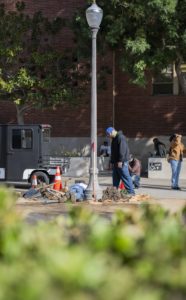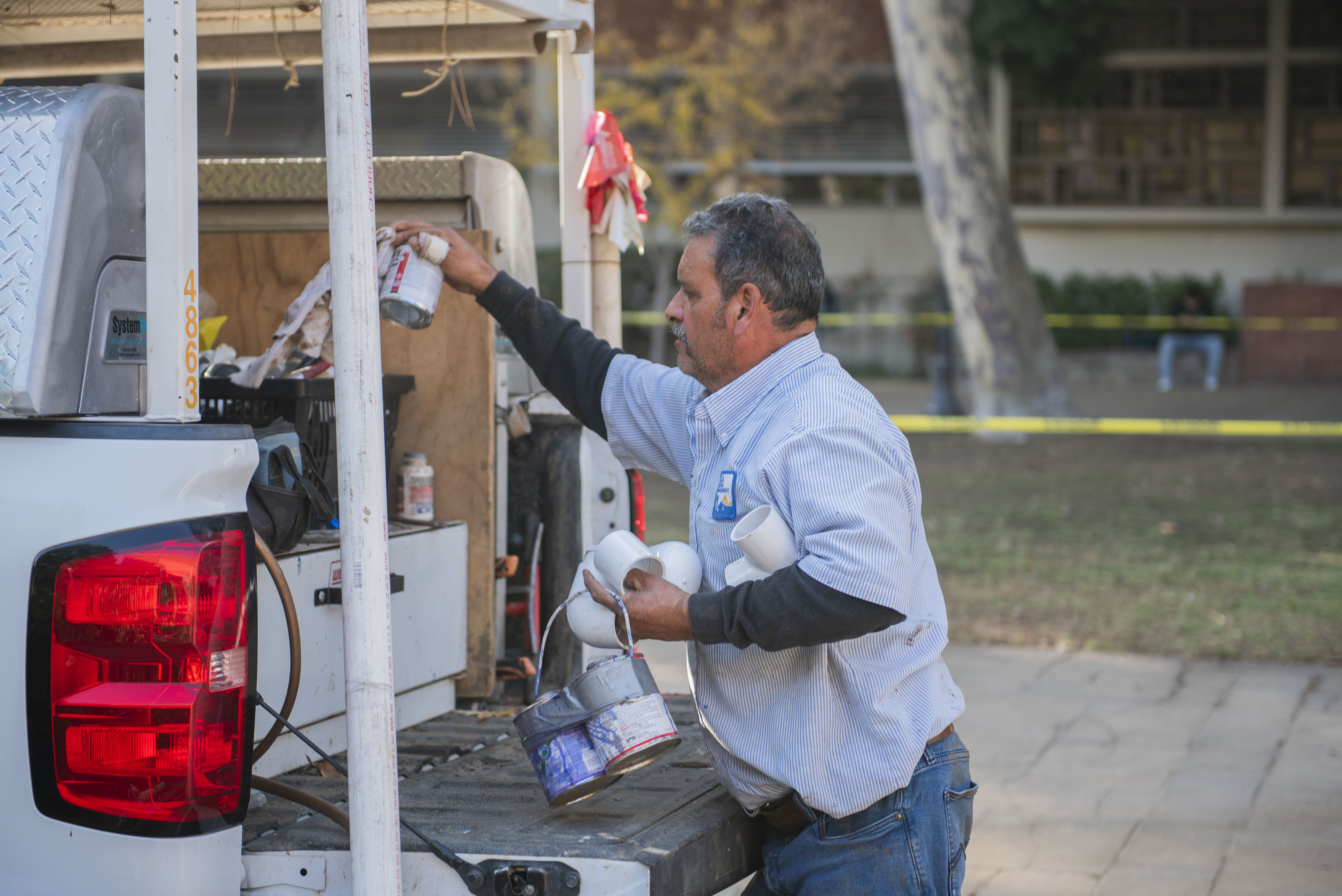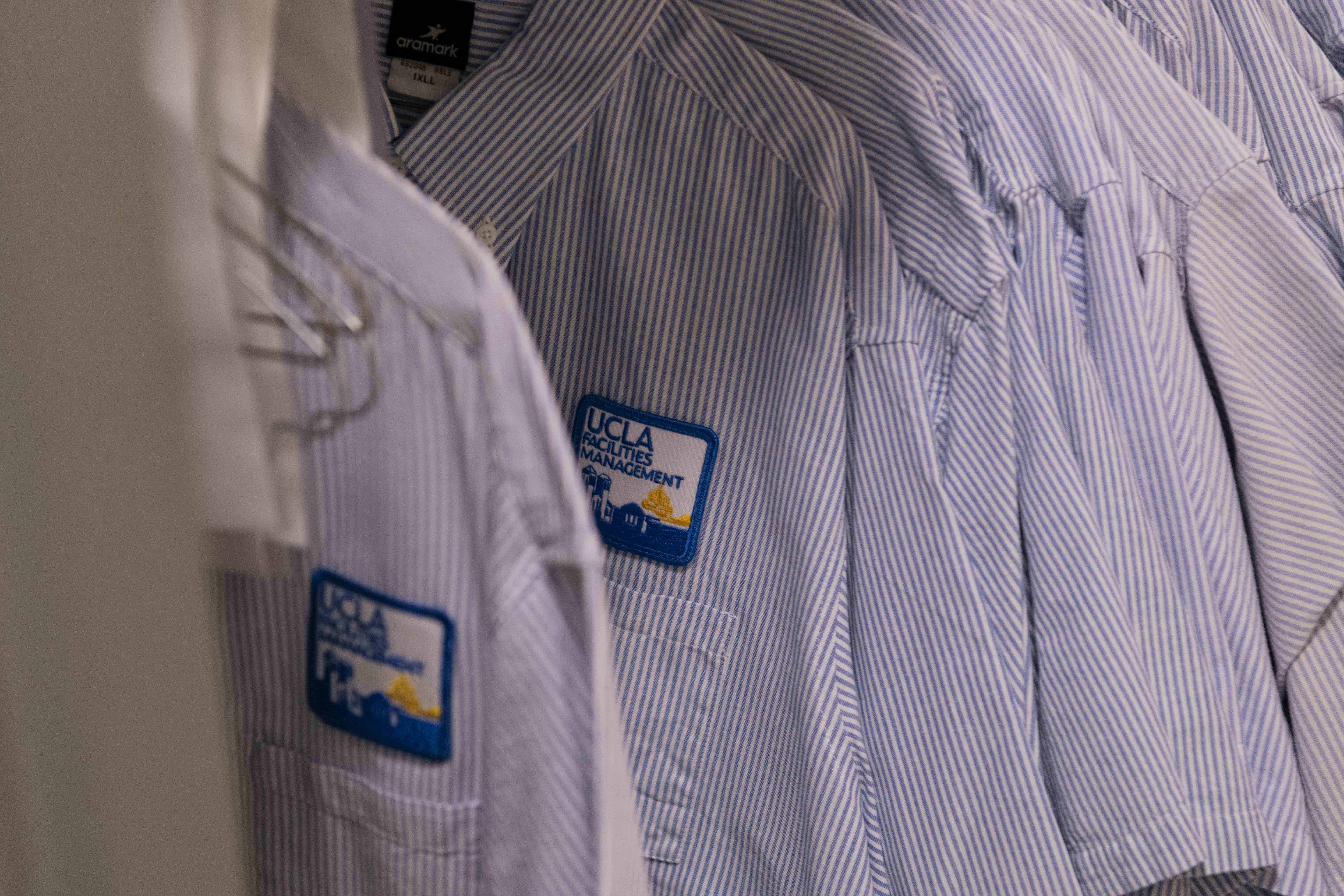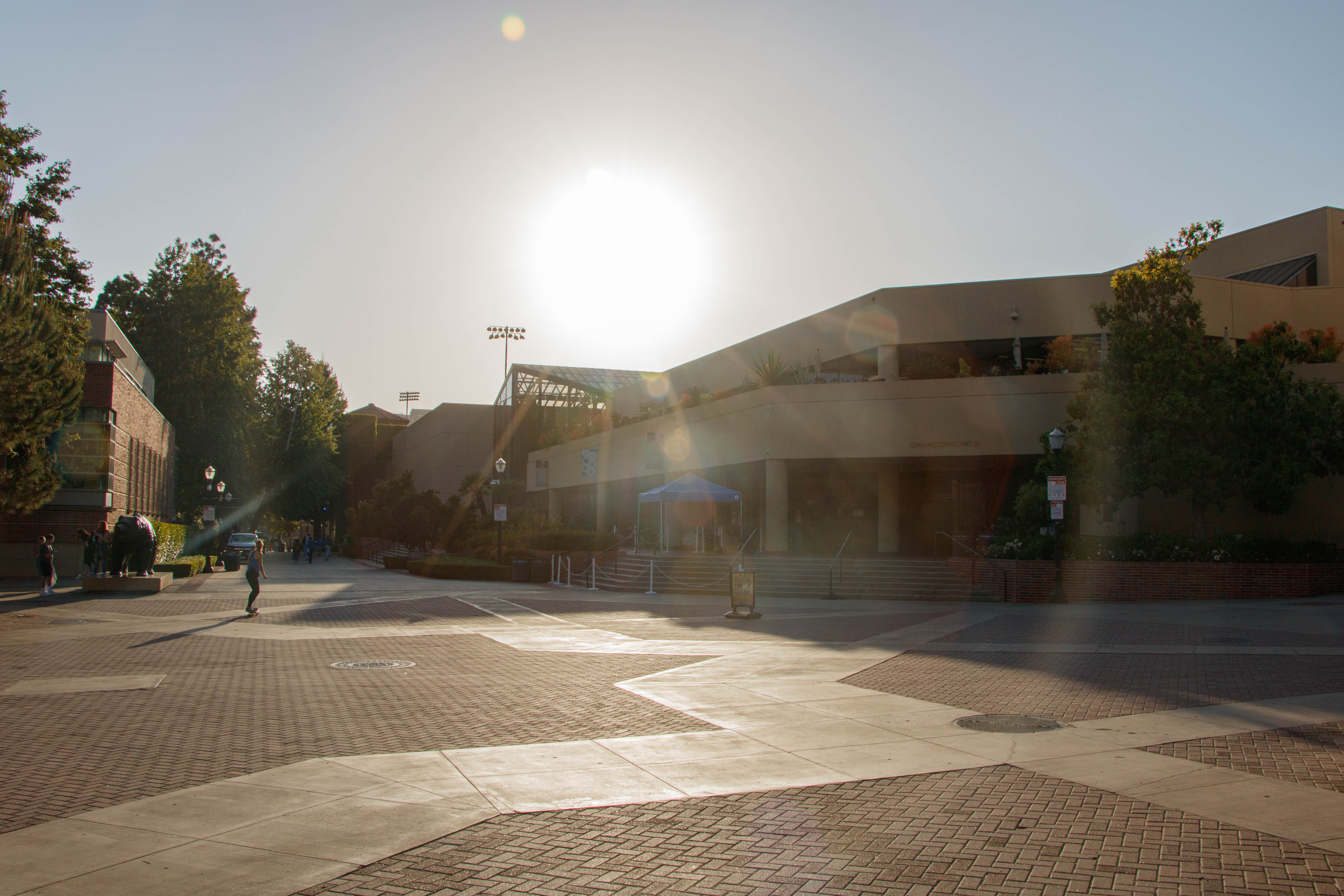Martin Castillo works to fix a pipe in the Court of Sciences. UCLA’s 89 Grounds team members work around the clock to maintain the campus. (Selin Filiz/Daily Bruin)
By Alisha Hassanali
January 21, 2025 at 9:40 p.m.
Martin Castillo set his hands on the rubber handles of a ground drill. He was hunched over, his blue uniform slick with sweat. The roar of the drill throbbed against his eardrums as it dug into the dirt slowly.
Whoosh.
He found it. The water pipe connected to the Court of Sciences had a major leak.
From trimming hedges to repairing pipes, UCLA’s 89 Grounds team members work to ensure the nation’s most Instagrammable campus is kept clean and safe. Staff members start off as laborers, taking care of all trash cans and cleanliness around campus, said groundskeeper Gustavo Sanchez.

He added that Landscaping and Grounds has to respond quickly to emergencies.
While helping drill a hole underground to repair a ruptured water main in the Court of Sciences, Sanchez said one of the most important qualities to have in the job is adaptability.
“As a groundskeeper, you may come in with a schedule, an agenda, but as soon as you arrive here, you throw it out the window … and you adjust and make time for other priorities,” he said over the roar of a ground drill.
Sanchez, a groundskeeper of two years after five as a laborer, added that his responsibilities include picking up and reporting debris around campus – such as fallen branches or hazardous waste – and ensuring sidewalks and staircases are clear.

Jose Hernandez, a groundskeeper of four years, said his normal workday starts at 5:30 a.m. and ends at 2 p.m. His daily duties consist of blowing the hardscape around campus, cleaning the planters, removing trees and picking up litter outside Westwood Boulevard’s Engineering buildings, he said.
“I’m not scared of hard work,” Hernandez said.
Laborers often work overtime during campus emergencies to keep students and faculty safe, said Josiah Marshall, a campus laborer. For example, the creek outside the UCLA Lab School tends to overflow, Marshall said, adding that laborers often arrive at 2 a.m. to protect the neighboring server room.
Hernandez said he recalls working outside Kerckhoff Hall after a red pepper tree fell, adding that he felt like even his most powerful tools were not suitable for clearing it.
“It was huge, and it was raining,” Hernandez said. “I had to chop it up with two big chainsaws. … I don’t even think the blade was wide enough.”
Marshall said one of his more challenging experiences was digging a trench nearly 20 feet deep outside the Center for Health Sciences. The narrow spaces and delicate systems of underground pipes meant the laborers could not use large machinery and had to dig the trench by hand, he said, adding that the process lasted days.
“You do feel tired, you feel worn out, you can feel drained,” Marshall said. “But you do feel accomplished when you reach your goal.”

However, the challenges for groundskeepers do not end with their workday. Earning a base wage of $24 per hour, the Grounds team members are some of the university’s lowest paid staff, said Hernandez, whose family members have previously worked at UCLA up until retirement.
The workers are members of the American Federation of State, County and Municipal Workers Local 3299, which went on a two-day strike in November, alleging the UC bargained in bad faith during contract negotiations. Their contract ended this past year, and negotiations are underway for better pay and hours, Hernandez added.
“We just want a little more pay so we can survive,” he said.
[Related: UC WORKERS STRIKE]
Most of the staff also work multiple jobs outside UCLA, including those involving other landscaping or construction work, Marshall said, adding that he has another job as a personal trainer.

Sanchez also said working in the heat poses another challenge, especially with summer temperatures on campus reaching up to 100 degrees.
Sanchez and his colleagues have learned to adapt by wearing long sleeves and a sun hat to protect their skin, he said.
Hernandez said littering students often make his job more difficult, adding that students should be mindful to walk around coned areas – which indicate the active use of potentially dangerous tools.
“Some of the students get upset when we’re blowing or somewhere working, and they want to walk right through your work area,” he said. “If you guys see cones or anybody like the groundskeepers working, just be alert.”
Amid the obstacles, Marshall said his favorite parts of the job are the people he works with and the opportunity to learn different skills. He said he views his work as a laborer as a time capsule, adding that seeing experienced coworkers allows him to see what his future life might be like.
“We all do the same things,” he said. “We all have similar responsibilities, and it could really be up to you if you want to enjoy the ride or if you want to go kicking and screaming.”
On challenging days, Marshall said he finds inspiration and joy in what surrounds him – UCLA’s 419-acre campus. Although he felt the weight of exhaustion pile on his body when he did his first 3 a.m. shift at UCLA, he said it seemed to vanish when he saw his name “Josiah” on the front of Royce Hall.
“I didn’t know anybody of stature by my name, besides in the Bible,” he added. “That was cool seeing his name on the building and just kept me motivated to keep pushing forward.”


